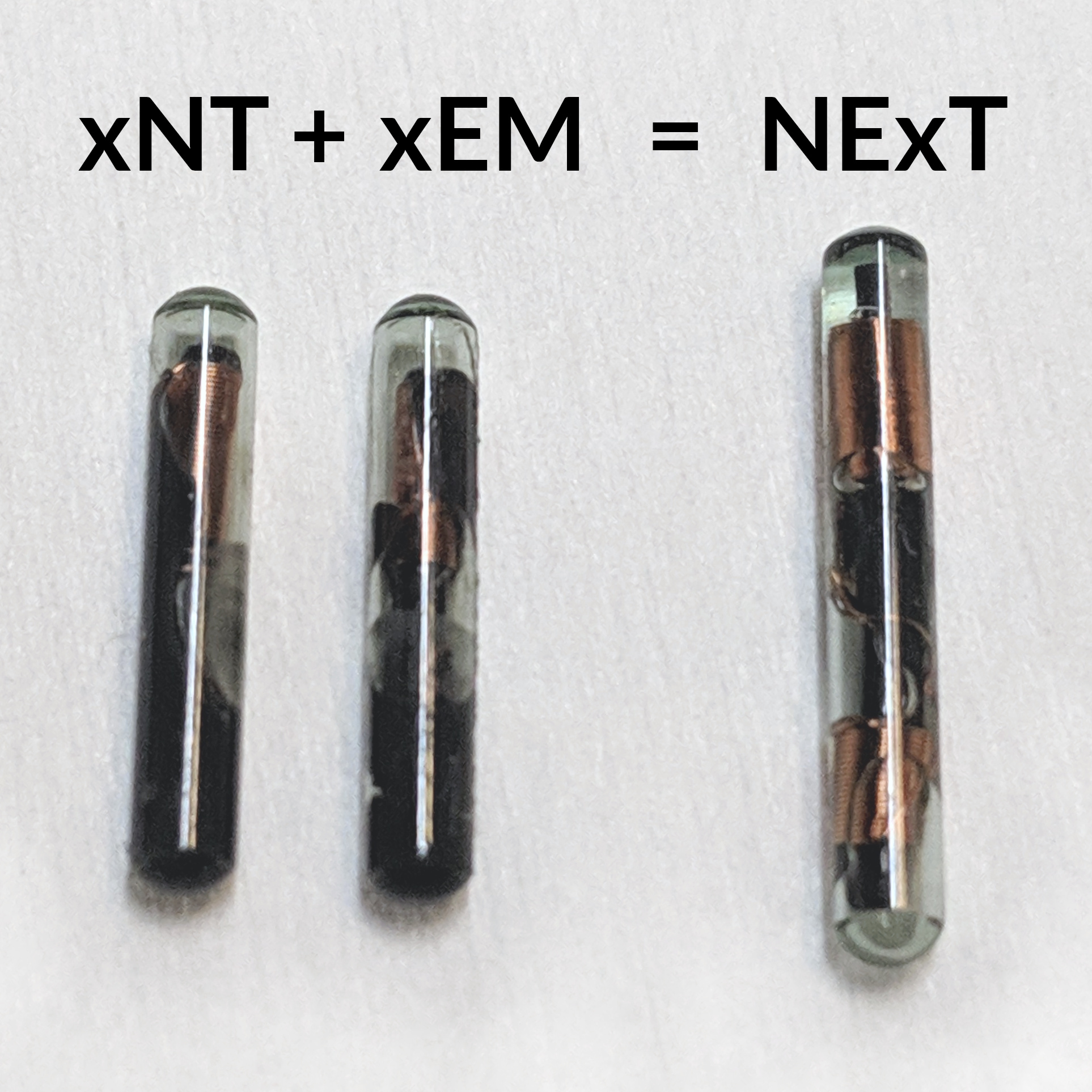
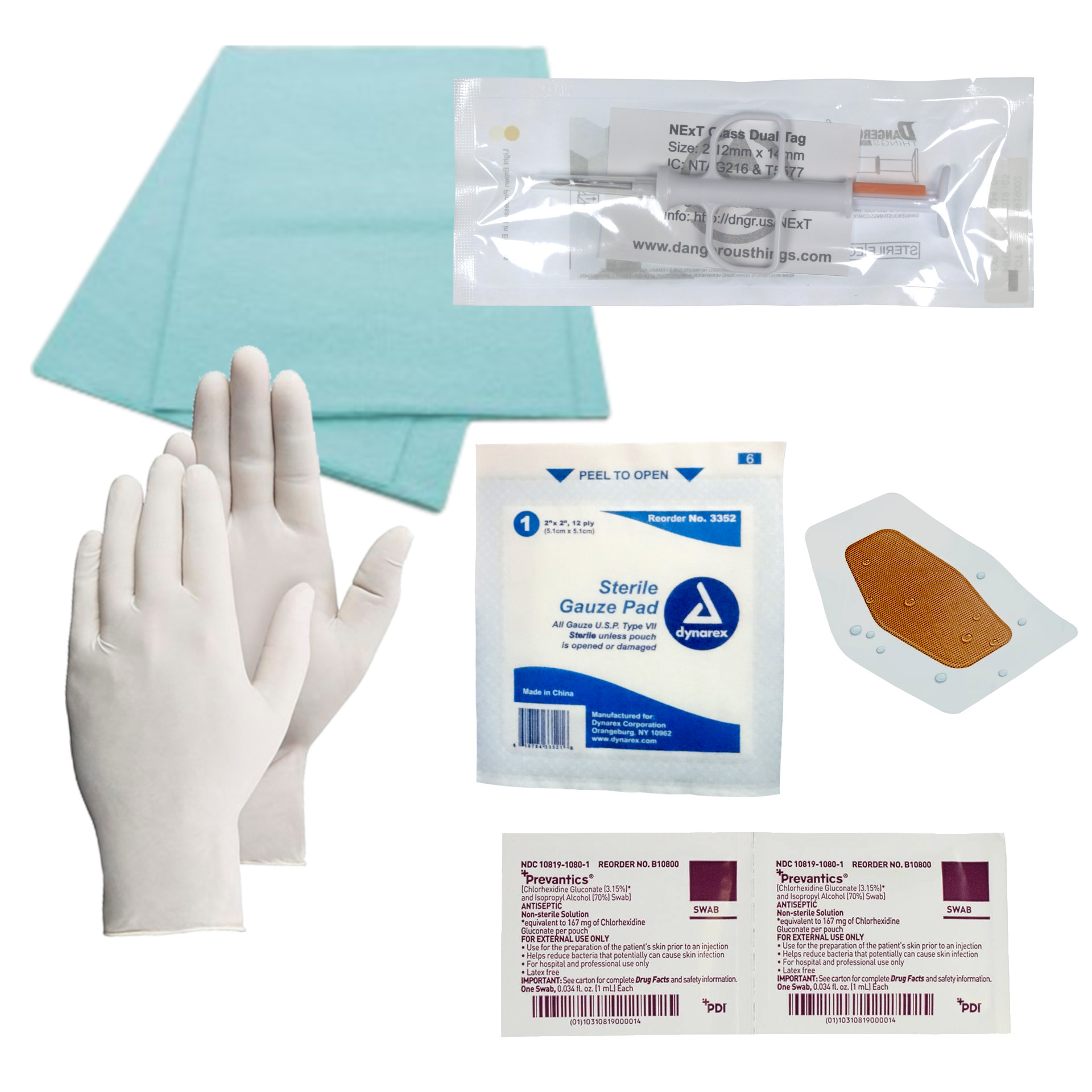
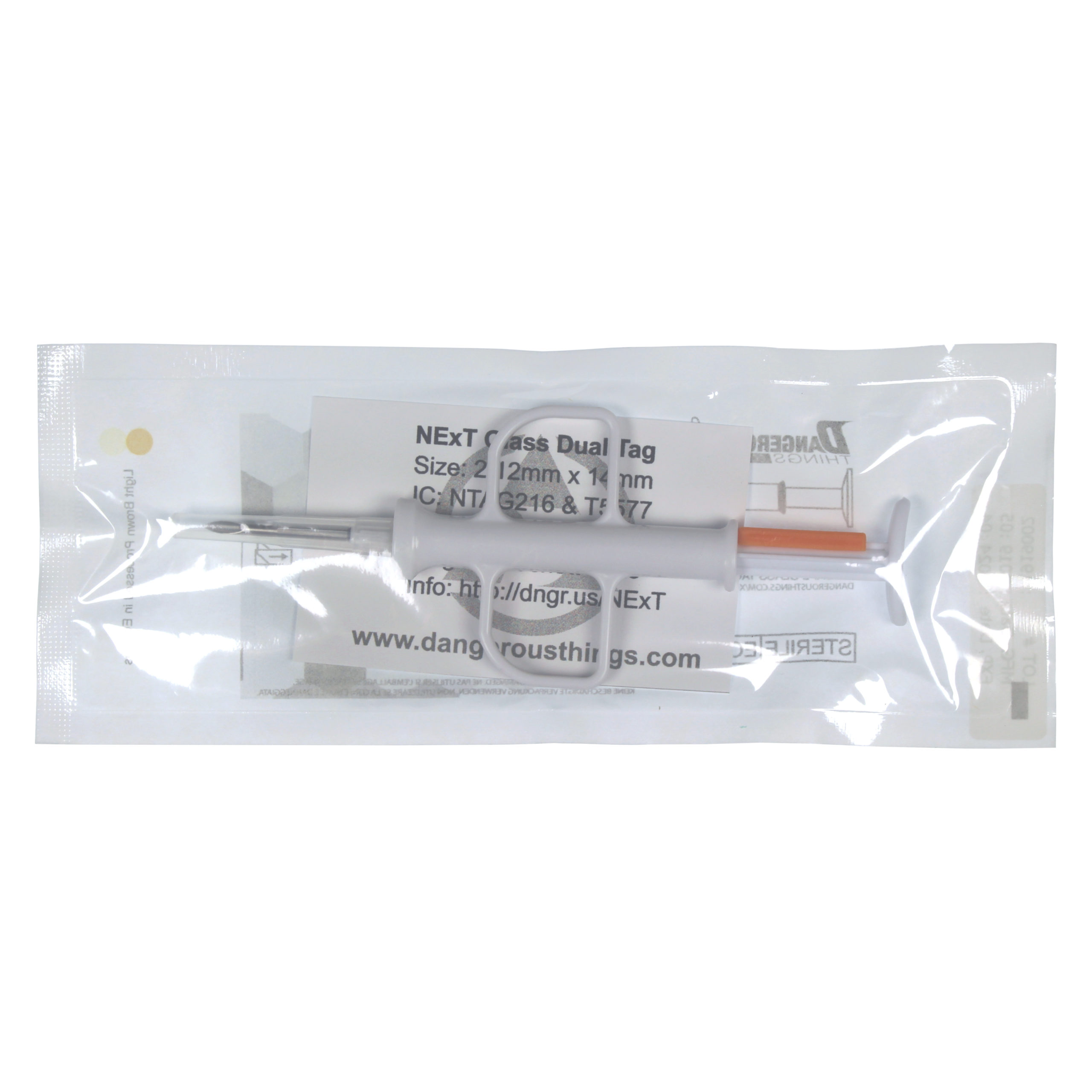

NExT RFID + NFC Chip
- NTAG216 13.56MHz ISO14443A NFC chip
- T5577 125kHz RFID chip (preprogrammed EM41xx 40 bit ID)
- 2.1x15mm cylindrical sterile bioglass implant
- Want an analog? Check out the STL
- Accessories! Field detectors and RFID Diag card included!
*Free shipping for qualified orders. Check our shipping policy for more info.
Biohacking Tech Primer Pro Installer Map$89.99 – $211.96
More Details
WARNING This kit definitely contains dangerous things. While our x-series chip implants have undergone several quality checks during manufacture, and have been put through a battery of tests, they have not been certified by any government regulatory agency for implantation or use inside the human body. Use of this device is strictly at your own risk.Maximize hand real estate with the NExT dual frequency chip implant! If you want the benefit of having both a high frequency NFC chip implant and a low frequency RFID chip implant, then the NExT is what you need! The NFC side of the NExT is an NTAG216 chip that works with 13.56MHz NFC capable smartphones, certain ISO14443A commercial access control systems, certain door locks, and USB contactless ISO14443A readers. The low frequency RFID side of the NExT is a 125kHz T5577 emulator chip that can behave like many different common low frequency chip types, including EM41xx, EM4200, HID 1326 ProxCard II, HID 1346 ProxCard III, and Indala access cards and keyfobs. Check out our video explaining how the T5577 works.
What can this chip implant do?
• Some types of access control applications
• Share data with NFC enabled smartphones
• Trigger events on NFC devices like smartphones
• Scan this chip implant to log into your computer
• Copy LF chip IDs to this product, but HF chip ID is set
What this chip implant can’t do
• Can’t make payments with this chip implant
• Chip implants can’t be used for GPS or tracking
NExT Standard Kit
The NExT Standard Kit contains the following products and materials, which are designed to enable you to bring the kit to a professional installation partner for installation.
- 1 sterile injector assembly, pre-loaded with NExT dual chip implant
- 2 single use ChloraPrep antiseptic wipes
- 1 sterile gauze pad for post-installation wound care
- 1 sterile expandable-fabric adhesive bandage
- 1 pair of non-sterile, non-latex procedure gloves
The following accessories also come with the standard kit. These accessories are “field detection” tools designed to assist you with identifying the type of readers you may encounter, but also the best location and orientation to present your NExT chip implant to any reader to get reliable performance.
Our X Field Detectors (xFD) will show you the best position and orientation to present your chip implant to any readers of the same frequency, while our RFID Diagnostic Card will tell you all about the frequency and duty cycles of random readers you encounter in the wild.
Important Things To Know
It’s going in your body, you should learn about things like performance expectations, installation procedure, first steps after installation, etc.
ADD ON: Access Kit
The Access Kit add-on for the NExT includes our two most popular access control devices. Watch the unboxing video to see what’s inside!
xEM Access Controller
The xEM Access Controller (xAC) is a stand-alone access control module that works with the 125kHz T5577 chip inside the NExT to allow (or deny) access to anything you wire it into!
Projects people have created with the xAC v2
Here are some projects on our community forum that utilize the xAC v2;
• Garage door opener project
• Unlock the car
• Gun safe upgrade
• Wall safe upgrade
• Another garage door opener
• Start the car
• Magic toolbox
KBR1 Keyboard Wedge Reader
On the other side of the NExT, the 13.56MHz NTAG216 NFC chip inside the NExT can be used with the KBR1 keyboard wedge reader as a simple but effective computer login solution for Windows or Mac.
ADD ON: Proxmark3 Easy w/Booster Board
The Proxmark3 Easy add-on for the NExT gives you the world renown and de-facto standard premiere RFID research and programming tool. *slaps box* This baby will read, crack, clone, and program just about any RFID or NFC tag you come across. It slices, it dices, it mixes, it fixes! Seriously, if you want to do anything with programming or cloning your NExT, this is the tool to use.
Proxmark3 Booster Board install and performance testing
Getting Started Guide for Proxmark3 Easy on Windows
Clone Proxmark3 dump file to Magic Ring with MCT app on Android
Unboxing the Proxmark3 Easy
Cloning Mifare 1k "classic" chips to an xM1 with the Proxmark3
Cloning common 125kHZ chips to the T5577
Exploring the Proxmark3
Detect chip type with a Proxmark3 Easy

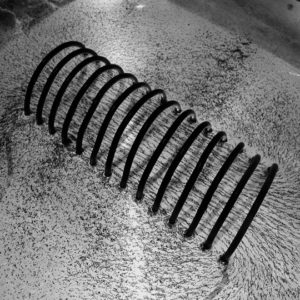 Passive RFID and NFC chips are batteryless, magnetically coupled devices that power themselves and communicate data over a shared magnetic field that the reader generates. This means their effective read range and performance depends entirely on how well the antenna coils of both the chip and reader couple with each other. This typically means the
Passive RFID and NFC chips are batteryless, magnetically coupled devices that power themselves and communicate data over a shared magnetic field that the reader generates. This means their effective read range and performance depends entirely on how well the antenna coils of both the chip and reader couple with each other. This typically means the 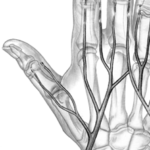 Our x-series transponders are typically installed into the webbing between the metacarpal bones of the index finger and thumb, resting parallel to the index metacarpal. They should be at least 5mm away from any bone or other implants to avoid possible impacts. The reason chip implants are usually installed in the hand has to do with the extremely short read range of most small chip implants. In the case of access control where the chip must be presented dirctly to a fixed reader of some kind, the hand is easily able to be properly positoned in front of the reader. To find out more about common installation locations of the hand, visit
Our x-series transponders are typically installed into the webbing between the metacarpal bones of the index finger and thumb, resting parallel to the index metacarpal. They should be at least 5mm away from any bone or other implants to avoid possible impacts. The reason chip implants are usually installed in the hand has to do with the extremely short read range of most small chip implants. In the case of access control where the chip must be presented dirctly to a fixed reader of some kind, the hand is easily able to be properly positoned in front of the reader. To find out more about common installation locations of the hand, visit 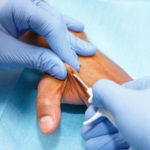 Achieving a safe installation definitely requires skill and experience performing aseptic procedures. Dangerous Things prefers our customers locate one of our
Achieving a safe installation definitely requires skill and experience performing aseptic procedures. Dangerous Things prefers our customers locate one of our 